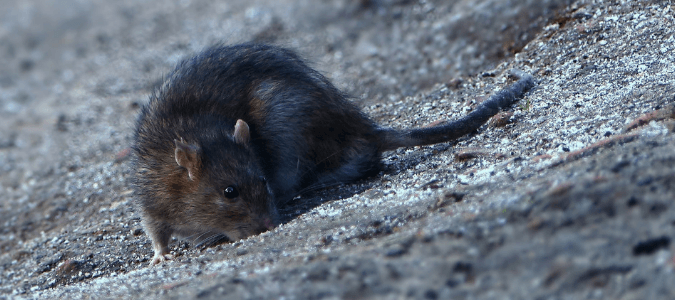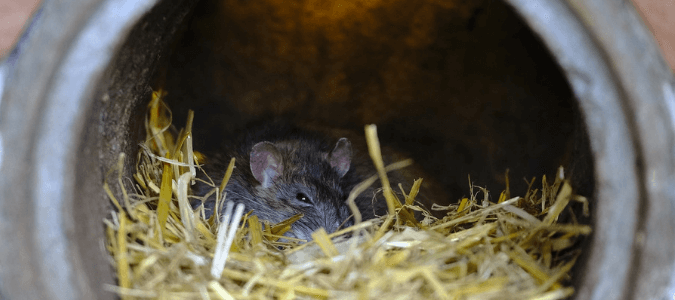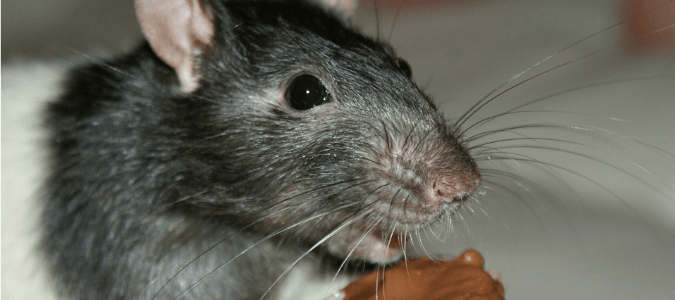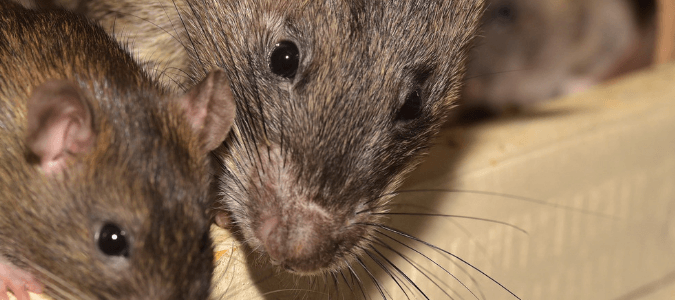
How long do rats live? It’s a common question and an important one if you have rats living and breeding in or near your home. Rats are known to be unsanitary and carry diseases (bubonic plague, anyone?), and they can cause extensive property damage if they’re allowed to build nests and breed in places they shouldn’t. Rats in the wild are prey to snakes, coyotes, owls, and other animals, so they often live for less than a year, but rats living in more protected indoor areas can live for two to three years. If their breeding is unchecked, they can produce thousands of babies throughout their lifetimes.
Homeowners across the southern states have reported a recent uptick in rat activity in many residential neighborhoods, which makes it all the more important to understand rats and their habits so that you can protect your home from these dangerous pests. Read on for answers to some common questions about rats, their living and mating habits, and how to get rid of them when they’ve invaded your home or property.
What Attracts Rats To Your House?
Understanding what attracts rats can help you learn how to keep rats away from your home. Rats are attracted to the same things that draw most animals to people’s property and into their homes: the promise of easy access to food, water, and shelter so that they can live and breed comfortably. Thus, when considering what attracts rats to your house, you should prevent these critters from accessing those essential elements that might make them want to move in, build a nest and raise a family.
Rats typically make their homes outside, in trees, fields, overgrown shrubbery, burrows in the ground, and other natural spaces. When fall arrives, and it starts getting cold outside, their self-preservation instincts kick in, pushing them to seek warm shelter, someplace protected from the elements. Coupled with the fact that more and more natural areas that have long been home to many wildlife species are being eaten up by residential and commercial construction, this means that rats may seek shelter in your home or garage, especially if doing so means they can also have access to a steady food and water supply.
So what do rats like to eat? The answer is, unfortunately, broad—rats will eat almost anything and everything. Anything humans and their pets enjoy eating also makes an excellent meal for a rat. Rats will also happily dine on garbage, animal droppings, birds and their eggs, and even other rats (yuck!). These rodents typically forage for food after the sun goes down, so you might find them in or around your garbage cans at night but see no sign of a rat during the day.
Just because you don’t see signs of rats in the daytime doesn’t mean they aren’t present in or around your home. Here are some common, telltale signs that rats are nesting and breeding within your home or somewhere on your property:
- Chew marks on wood, wires, cardboard boxes, and other items. Rats can use their long, sharp front teeth to gnaw through many things in and around a home, including the wood that comprises the frame of a house or garage. When rats chew through electrical wiring, you could be at an increased risk of an electrical fire.
- Small, elongated black pellets, which are rat feces or droppings. These unwelcome deposits can often be found in pantries or cabinets where food is stored (human and pet food) or near water sources such as under-sink cabinets or pet water bowls. Rat droppings can also often be found in out-of-the-way places, such as on top of rafters or beams or inside chewed cardboard boxes in a garage or storage space.
- Noise comes from within the walls or other interior spaces. When you have rats or other rodents living in your walls, ceiling, or attic, you might hear occasional noises such as squeaks, scurrying, or rustling.
- Rub marks and worn “runways” can look like paths through the grass, along the foundation, or along an interior or exterior wall that rats habitually run along as they travel between their nests and food or water sources. These rodents’ bodies leave greasy track marks along any border they habitually travel past as they do their daily business.
- Rat nests are built in dark, secluded areas of the attic or garage, including inside the interior or exterior walls of your home or in sheltered, overgrown areas of your yard.

What Does A Rat Nest Look Like?
Rats prefer to build their nests in places that offer protection from natural predators and the elements, such as rain, cold air, or snow. Outside in nature, likely spots for rats to build nests include overgrown bushes and wood piles, which provide excellent camouflage for the burrows some rats dig in the ground. These caves have main entrances, and back exits that the underbrush can shield from view. The exterior hole of an in-ground rat burrow is a few inches in diameter, with hard-packed dirt walls that lead into a more oversized, similarly hard-packed den underground. Outdoor rats also build above-ground nests in trees.
Indoors, rats build their nests in attics, in garage beams, or inside interior or exterior walls. They might also build nests inside hollow ceiling spaces, unused ductwork or cabinetry, or anywhere else, offering privacy, warmth, and protection. Since rats need water daily, any nest they build, indoors or outdoors, will have easy access to a water source.
Wherever a rat builds its nest, the inside of the nest will look like a ball or pile of shredded paper or fabric. Rats use all kinds of materials, including cotton and other textiles, along with paper and cardboard, that they shred to make their nests warm and comfortable.
How Often Do Rats Reproduce?
Rats are incredibly prolific. A female rat has about 15 “windows” per year, during which she can breed, and within each window, she can mate many times. Most female rats can produce about six litters a year, each producing anywhere from 10 to 15 young. Thus, if a female rat lives for two to three years, she might have hundreds or even thousands of babies during her lifetime if her breeding is not checked or prevented.
This is another reason why keeping rat populations under control is so vital. When left unchecked, they can grow exponentially larger very, very quickly.
How To Get Rats Out Of Your House
Keeping rodents out of your home can seem complicated. If you have rats in your house, it’s essential to get rid of them as quickly and safely as possible and then take follow-up steps to prevent them from returning. Rats are known to spread diseases, including salmonella, typhus, and bubonic plague; these diseases can spread in various ways, including through rat droppings and via their nests. Rats can also indirectly cause house fires by gnawing through electrical wiring and can cause other structural damage to homes and garages. These are just a few of the many reasons to keep rats well away from areas where people live.
The following measures can be effective in getting rid of rats and preventing them from invading or infesting a home:
- Clear overgrown brush, vines, and tree limbs from your yard, and keep the grass mowed close to the ground. This will help eliminate areas of shelter that rats might otherwise use to build their burrows. Keeping trees trimmed back from utility lines that lead to your home will also keep rats from traveling along these lines to your house.
- Remove any access to food sources. This might mean securing garbage cans, switching from plastic to metal ones, placing pet food in locked, airtight bins, and keeping human food inside containers rats can’t chew through. If you have a compost pile or bin, this must also be secured so rats can’t access it for food. Keep your yard clear of dog and cat droppings, as these can also provide a food source for rats.
- Remove access to water by fixing leaky faucets and otherwise covering or eliminating places where water can flow or collect.
- Seal any cracks or holes in your foundation or other areas of your home—any place rats might be able to use as an entryway into a den inside the walls or roof or under your home if you have pier-and-beam construction. Beautiful holes might be located near water sources like your clothes washer, water pipe, or hose.
- Set out bait or traps, such as traditional snap traps or trapping boxes, to catch and kill rats as they search for food. Many homeowners prefer lures since they don’t involve toxic chemicals and allow the homeowner to move or dispose of the rat. (When poison is used, the rat can crawl off to die, making it difficult to find and dispose of the body.) Be especially careful with using rat poison on your own, also called rodenticide; these poisons can even be dangerous for humans and pets and non-pest animals that aren’t the bait’s target.
ABC Can Rid Your Home Of Rodents
If you have a rat problem that proves beyond your scope to manage independently, call a trusted pest professional as soon as possible. The longer you wait to effectively address a rat infestation, the more their population will grow and the more structural damage the rats will be able to do to your home and property — damage that can be very expensive to fix. The experienced wildlife and rodent control exterminators at ABC Home & Commercial Services can come to assess the rat nest and level of infestation, make recommendations about how to eradicate the unwanted rodents, and give you a free quote and estimated timeline for the job, so you and your loved ones can live in a safe, rat-free environment as soon as possible.


